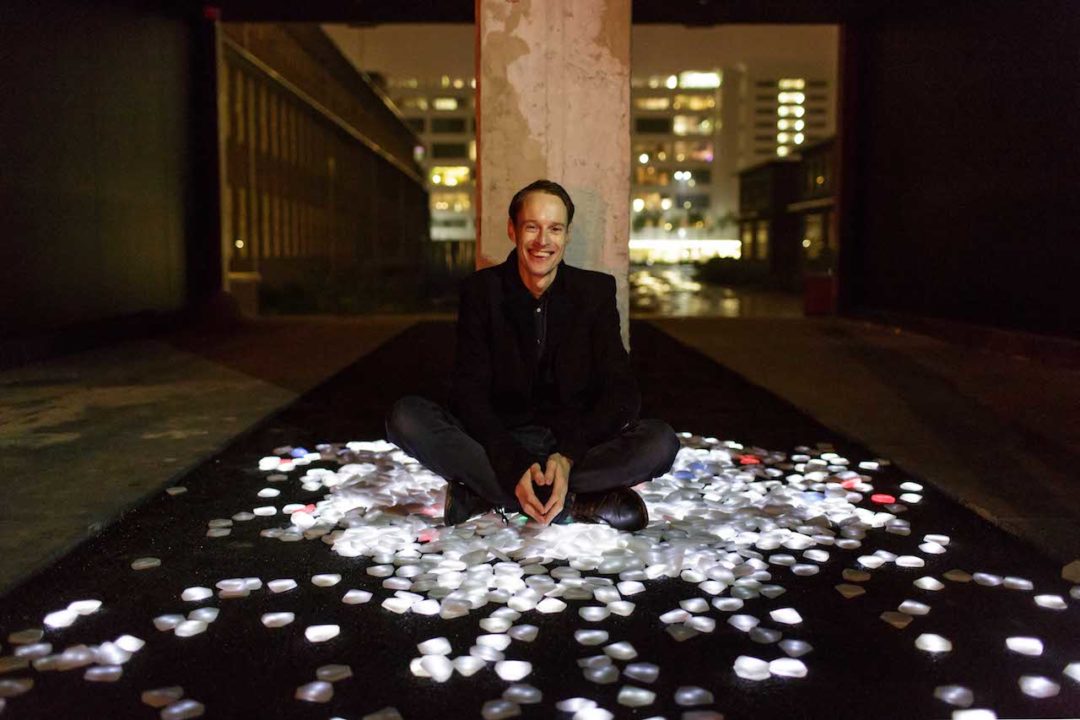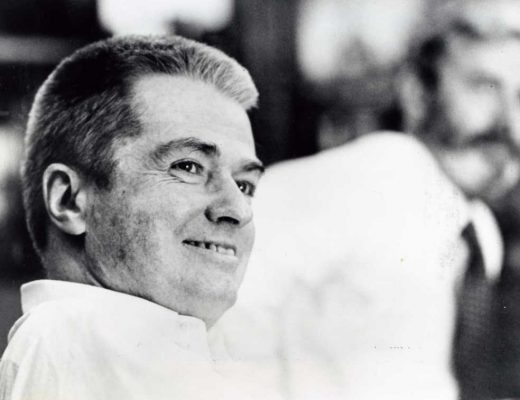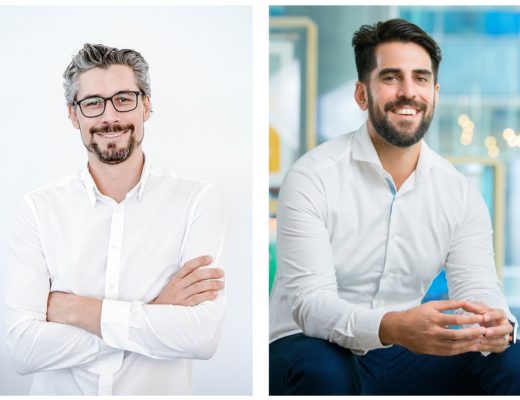Renowned Dutch designer Daan Roosegaarde, whose work sits at the confluence of art, science and design, has created a 20,000m2 artwork called GROW that highlights the beauty and significance of agriculture.
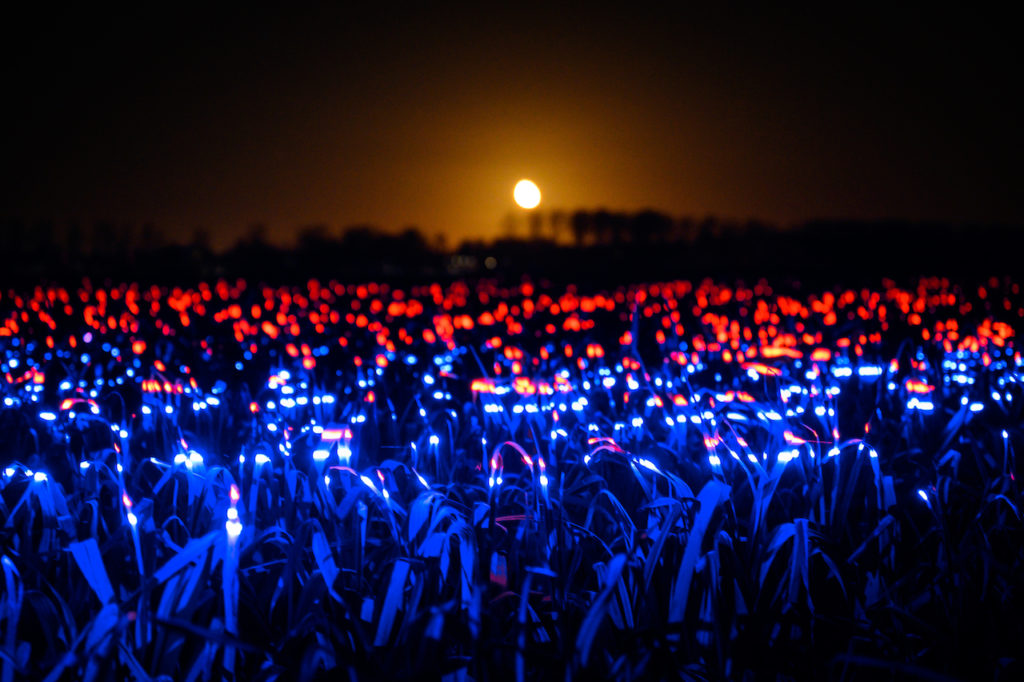
GROW is part of Dutch financial institution Rabobank’s artist-in-residence programme that invited Mr Roosegaarde and his team of designers and experts to develop GROW over two years. The project was informed by expert knowledge sessions at Studio Roosegaarde, Wageningen University & Research, Springtij Forum, and the World Economic Forum in Davos. It is the first in a series of dreamscapes by Studio Roosegaarde which show the beauty of combining art and science to create a better world. Previously, the avant-garde designer has created functional artworks to highlight the importance of climate change through rising water levels and global warming.
Wiebe Draijer, CEO, Rabobank, says: “It is really inspiring to work with an artist like Daan Roosegaarde on how to grow a better world together.”
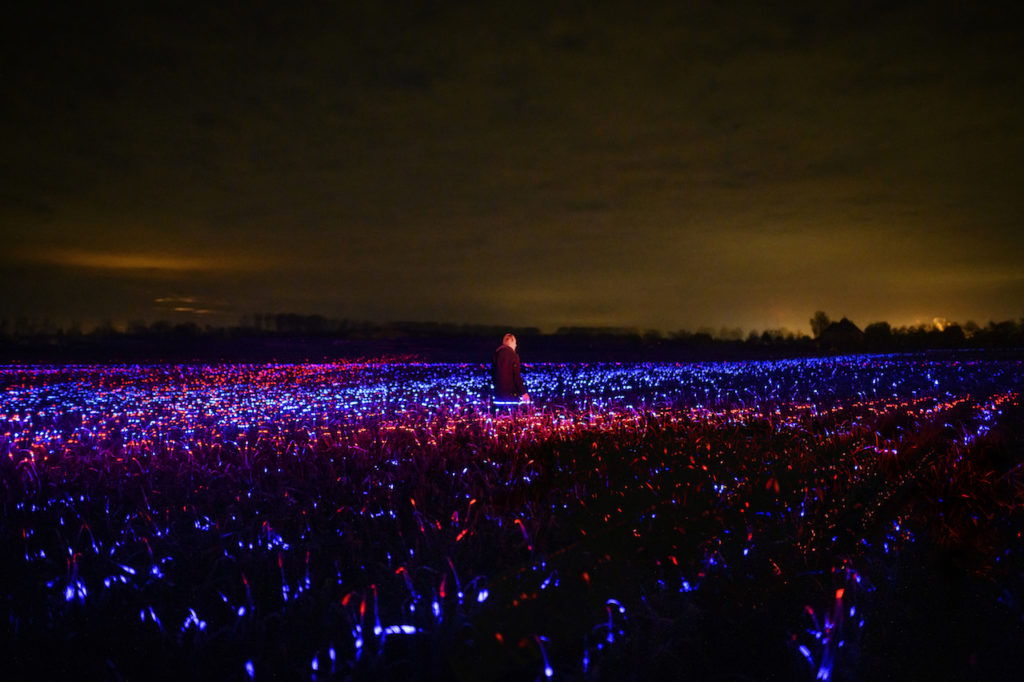
Appearing as a luminous dreamscape, the red and blue lights of GROW wash like waves over an enormous field surrounded by darkness. It is inspired by science exploring how certain “recipes” of light can improve plants’ growth and resilience. At the same time, says Mr Roosegaarde, it highlights the importance of innovation in the agriculture system: How can cutting-edge light design help plants to grow more sustainably? How can we make the farmer the hero?
Prof Dr Wargent, Chief Science Officer at BioLumic, a world-leading expert in plant photobiology: “The project GROW is a fascinating project and supported by scientific research which shows specific light recipes can enhance growth and reduce pesticide use up to 50%.”
“GROW is the dreamscape which shows the beauty of light and sustainability. Not as a utopia but as a protopia, improving step by step.”
Daan Roosegaarde
DE51GN speaks to Mr Roosegaarde about the genesis of the project.
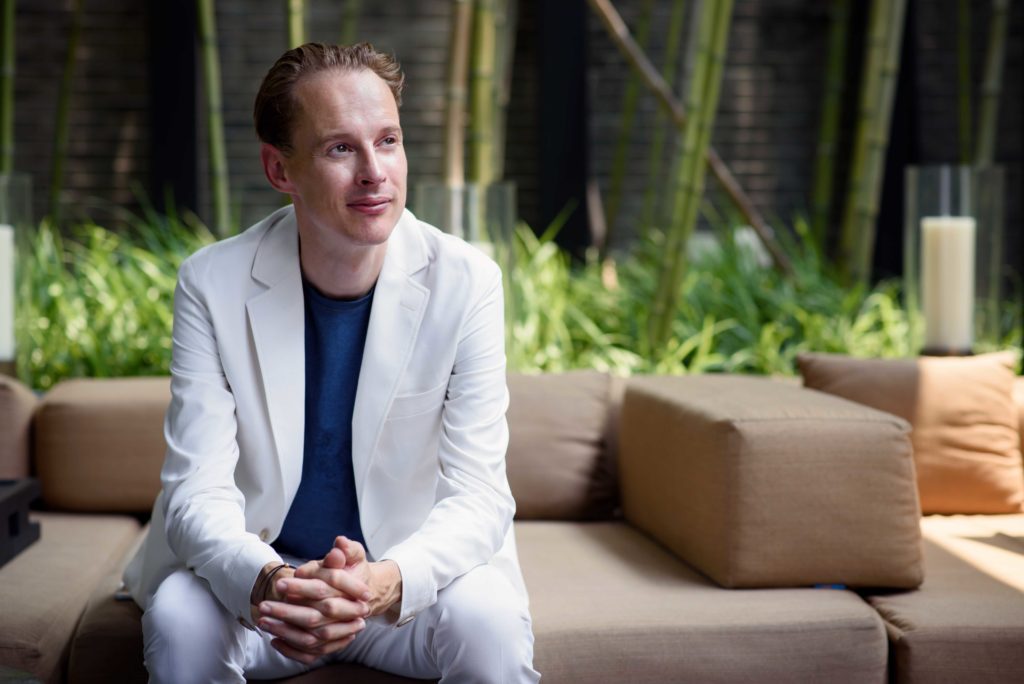
What inspired you to turn your attention towards agriculture and create an interwoven narrative with lighting science?
The conversation started with Wiebe Draijer who asked: “Can we work together to tackle food problems in the world?”
I then asked myself: “We have these huge fields which feed us, but people rarely notice them. How can we show the beauty of sustainable agriculture? How can light help crops to grow more sustainably?” This was the beginning of GROW.
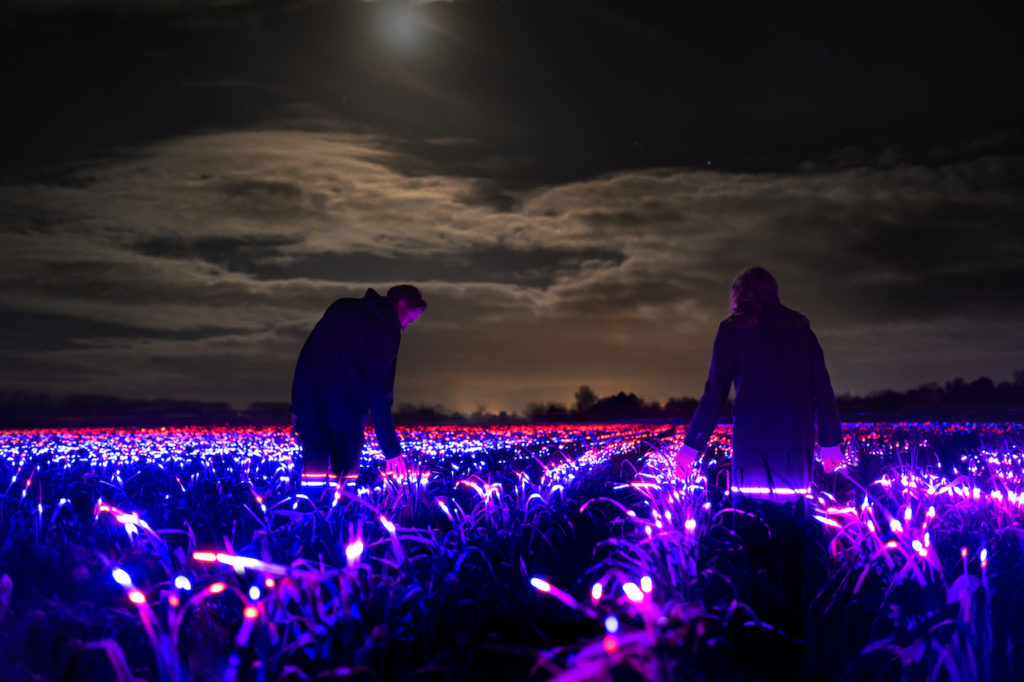
Food sufficiency has become a hotly discussed topic in many nations as well as an important agenda at the World Economic Forum. Why aren’t governments and organisations using science to its fullest potential yet to boost agricultural production?
It’s a good question. Sometimes organisations are too narrowly focussed. More innovative thinking and crossover functioning are needed to create a better future.
“Most solar energy occurs at wavelengths unsuitable for photosynthesis since 98% of the solar energy reaching Earth is reflected from leaves which convert it to heat. Only 1 to 2% is available to be captured by plants. So to enhance the effectiveness of sunlight for optimum production, GROW for crops is a good thing everywhere.”
Daan Roosegaarde
How do you reckon your project can help farmers in developing nations get a better control over their farming techniques and bolster their efforts?
GROW highlights the beauty of agriculture, showing the places which feed us, the farmer and the local crops. So this appreciation is important. Second, GROW is a platform for light science to improve crop growth. We are open to collaborations to speed-up further development.
What challenges do you foresee in implementing the GROW solution, especially in the developing world?
We live in a world where causing pollution is free – and the price we pay remains invisible to most. So to implement new design innovations, we need not only function but design an experience to engage people, and allow change to happen.

Most countries in Asia are blessed with round-the-year abundant sunshine. What major benefits can GROW offer them since adequate natural light is not really a problem here?
Most solar energy occurs at wavelengths unsuitable for photosynthesis since 98% of the solar energy reaching Earth is reflected from leaves which convert it to heat. Only 1 to 2% is available to be captured by plants. So to enhance the effectiveness of sunlight for optimum production, GROW for crops is a good thing everywhere.
You might also like:

